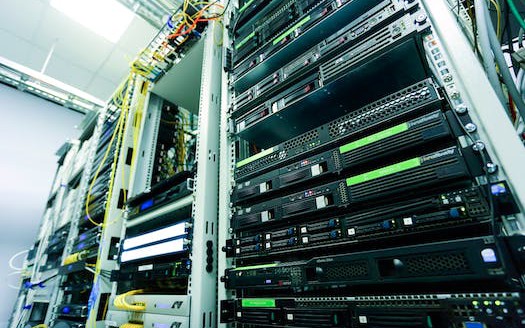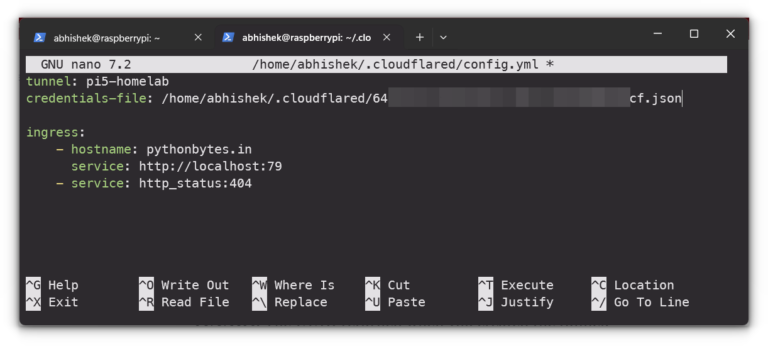
In order to provide computational resources and services over the internet, a cloud computing data center is a complex infrastructure that combines different hardware components. In this thorough overview, we will look at the various hardware parts that are frequently found in a data center for cloud computing. Cloud computing has become a potent technology in the age of digital transformation, enabling both businesses and individuals to take advantage of the potential of scalable and on-demand computing resources. The data center, a building that houses a huge variety of hardware elements that cooperate to deliver cloud services, is the central hub of cloud computing.
This article aims to provide a detailed exploration of the hardware used in a cloud computing data center, highlighting their functions, importance, and emerging trends.
Servers
The core components of a cloud computing data center are servers, which handle user requests and run virtualized workloads. In a typical data center, there are many servers that are arranged into racks and stacked in rows in server rooms. These servers can be categorized into two main types:
Compute Servers: These servers are optimized for processing power and are responsible for executing applications and workloads. They usually consist of powerful CPUs (Central Processing Units) or even specialized processors like GPUs (Graphics Processing Units) or TPUs (Tensor Processing Units) for specific tasks such as AI and machine learning. Compute servers may also have large amounts of RAM (Random Access Memory) to accommodate memory-intensive applications.
Storage Servers: Storage servers are designed to provide high-capacity storage for data and are optimized for I/O (Input/Output) operations. They often feature large-capacity hard disk drives (HDDs) or solid-state drives (SSDs) for data storage. Storage servers can be further divided into different tiers based on their performance characteristics and redundancy levels.
Servers are interconnected with networking infrastructure through switches or routers to ensure communication between different components within the data center. Within a cloud computing data center, servers are typically organized into racks, with each rack housing multiple server units. These units consist of several key components:
Central Processing Unit (CPU): The CPU, also known as the processor, executes instructions and performs calculations. In cloud data centers, multi-core processors are commonly employed, enabling parallel processing and increased performance.
Random Access Memory (RAM): RAM provides temporary storage for data and instructions that the CPU requires for immediate access. Servers in cloud data centers often feature large amounts of RAM to accommodate the demands of multiple virtual machines (VMs).
Hard Disk Drives (HDDs) and Solid-State Drives (SSDs): HDDs and SSDs are storage devices used to store data persistently. While HDDs offer higher storage capacity at a lower cost, SSDs provide faster data access and better performance. Cloud data centers often utilize a combination of both to optimize storage and cost efficiency.
Storage Systems
Cloud computing data centers require robust and scalable storage systems to store and manage vast amounts of data. Various storage technologies are used in data centers, including:
Direct-Attached Storage (DAS): DAS refers to storage devices directly connected to individual servers. It offers low latency but lacks scalability and centralized management.
Network-Attached Storage (NAS): NAS systems provide centralized storage accessed through a network connection. They offer file-level access and are suitable for sharing files across multiple servers or clients.
Storage Area Network (SAN): SANs are dedicated high-speed networks that connect servers and storage devices. They provide block-level access and are commonly used for hosting virtual machine disks and database storage.
Object Storage: Object storage systems are designed to store large amounts of unstructured data as objects, each with its unique identifier. This technology is well-suited for cloud storage, backup, and content delivery applications.
Storage systems often employ redundancy mechanisms like RAID (Redundant Array of Independent Disks) and replication to ensure data durability and availability.
Networking Equipment
Networking infrastructure plays a critical role in connecting various components of a cloud computing data center. It enables data transmission between servers, storage systems, and the outside world. Key networking equipment includes:
Switches: Switches facilitate local network communication by forwarding data packets between different devices within the data center. They come in various forms, such as Ethernet switches for traditional networking and InfiniBand switches for high-performance computing environments.
Routers: Routers are responsible for directing network traffic between different networks. They determine the best path for data packets to reach their destination across interconnected networks, both within the data center and to external networks.
Load Balancers: Load balancers distribute network traffic across multiple servers to ensure optimal resource utilization and improve application performance. They help prevent overload on individual servers and enable scalability.
Firewalls: Firewalls are used to enforce network security policies by monitoring and controlling incoming and outgoing network traffic. They protect the data center infrastructure from unauthorized access and malicious activities.
Power and Cooling Systems
Power and cooling systems are crucial for maintaining the operational integrity and efficiency of a cloud computing data center. These systems ensure that hardware components operate within their specified temperature ranges and have uninterrupted power supply. Key components include:
Uninterruptible Power Supply (UPS): UPS units provide backup power in the event of a power outage, ensuring that critical systems remain operational until power is restored or a graceful shutdown can be performed.
Generators: Generators act as a secondary power source, capable of providing electricity for extended periods during prolonged power outages. They are typically fueled by diesel or natural gas.
Power Distribution Units (PDUs): PDUs distribute electrical power to different server racks and equipment within the data center. They often incorporate features like remote monitoring and power metering.
Cooling Systems: Cooling systems maintain optimal operating temperatures within the data center. They include HVAC (Heating, Ventilation, and Air Conditioning) systems, precision air conditioners, and computer room air conditioning units (CRAC) to remove heat generated by the hardware components.
Management Infrastructure
A cloud computing data center requires sophisticated management infrastructure to monitor, configure, and control the hardware components effectively. These include:
Data Center Infrastructure Management (DCIM): DCIM software provides a comprehensive view of the data center’s physical infrastructure, including server and network equipment placement, power consumption, and cooling requirements. It helps optimize resource utilization and improve efficiency.
Virtualization Software: Virtualization platforms like VMware, Hyper-V, or KVM enable the creation and management of virtual machines (VMs) on the servers. They allow multiple instances of operating systems and applications to run on a single physical server, increasing resource utilization.
Monitoring and Alerting Tools: Monitoring systems continuously monitor the health and performance of hardware components and generate alerts or notifications in case of failures or abnormal conditions. They provide insights into resource usage, network traffic, and other critical metrics.
Orchestration and Automation Tools: Orchestration and automation tools enable the provisioning, deployment, and management of resources in the data center. They streamline operations, optimize resource allocation, and facilitate rapid scalability.
Security Measures
Security is of paramount importance in cloud data centers, as they house sensitive data and infrastructure. Some key security hardware components include:
Firewalls: Firewalls monitor and control incoming and outgoing network traffic based on predefined security rules. They protect the data center from unauthorized access and potential cyber threats.
Intrusion Detection and Prevention Systems (IDPS): IDPSs monitor network traffic and identify potential security breaches or malicious activities. They detect and mitigate attacks, ensuring the integrity and availability of cloud services.
Physical Security Systems: Physical security measures, such as surveillance cameras, access control systems, and biometric authentication, safeguard the data center from unauthorized physical access.
Conclusion
The wide range of hardware elements that make up a cloud computing data center’s foundation have been discussed in this article. To deliver scalable and dependable cloud services, servers, networking hardware, storage systems, power and cooling infrastructure, and security measures all work in unison. As technology develops further, data centers are likely to see improvements in hardware, such as the adoption of more potent processors, larger storage devices, and a greater emphasis on energy efficiency. For companies and individuals looking to take advantage of cloud computing in the digital age, an understanding of the subtleties of these hardware components is crucial.
Conclusion: To provide users with computing resources and services, a cloud computing data center is made up of a variety of hardware components that work together seamlessly. The management infrastructure, power and cooling systems, networking hardware, storage systems, servers, and storage systems are all essential components of the overall infrastructure. These components will inevitably advance to meet the rising demands of cloud computing thanks to ongoing technological advancements.


